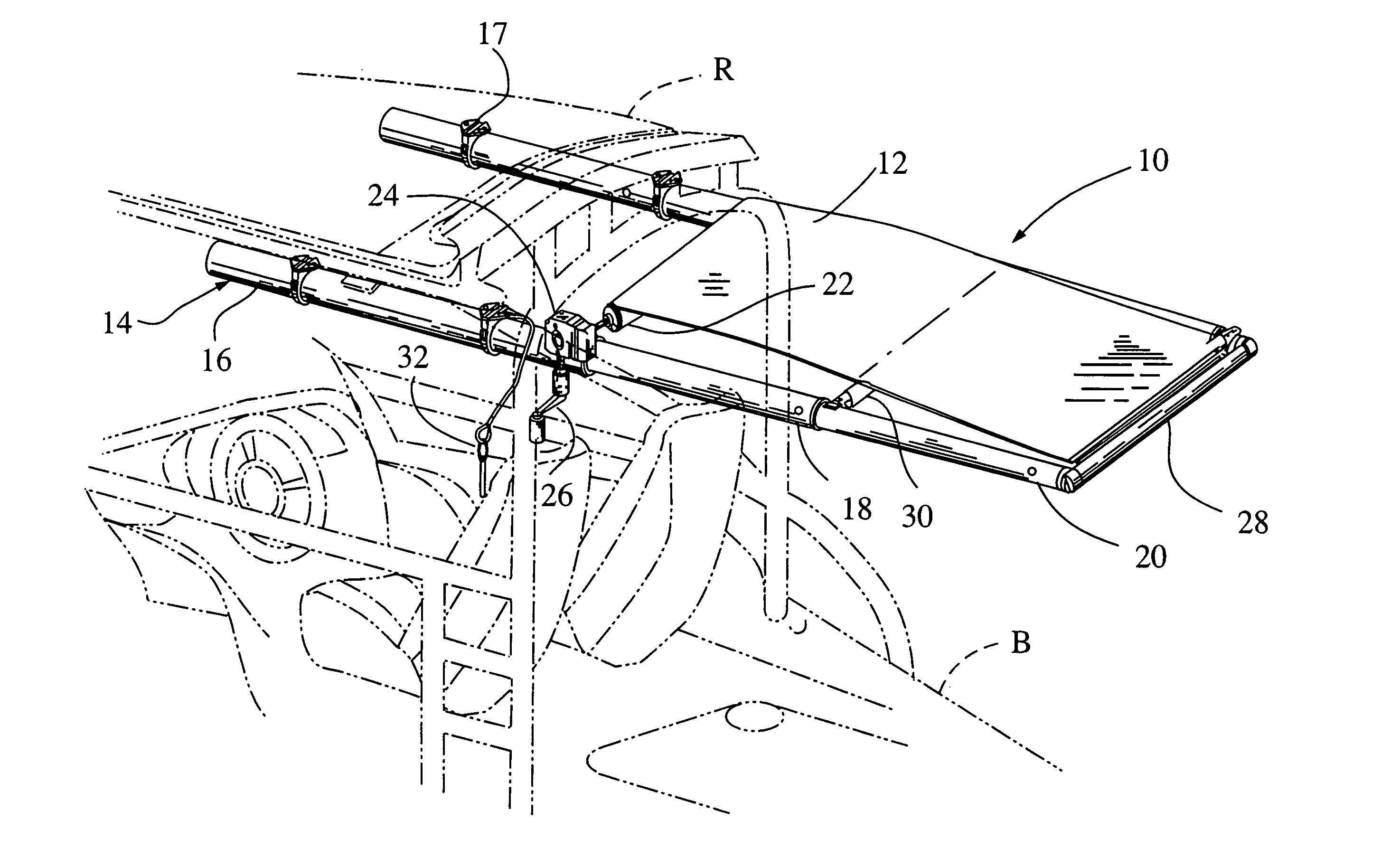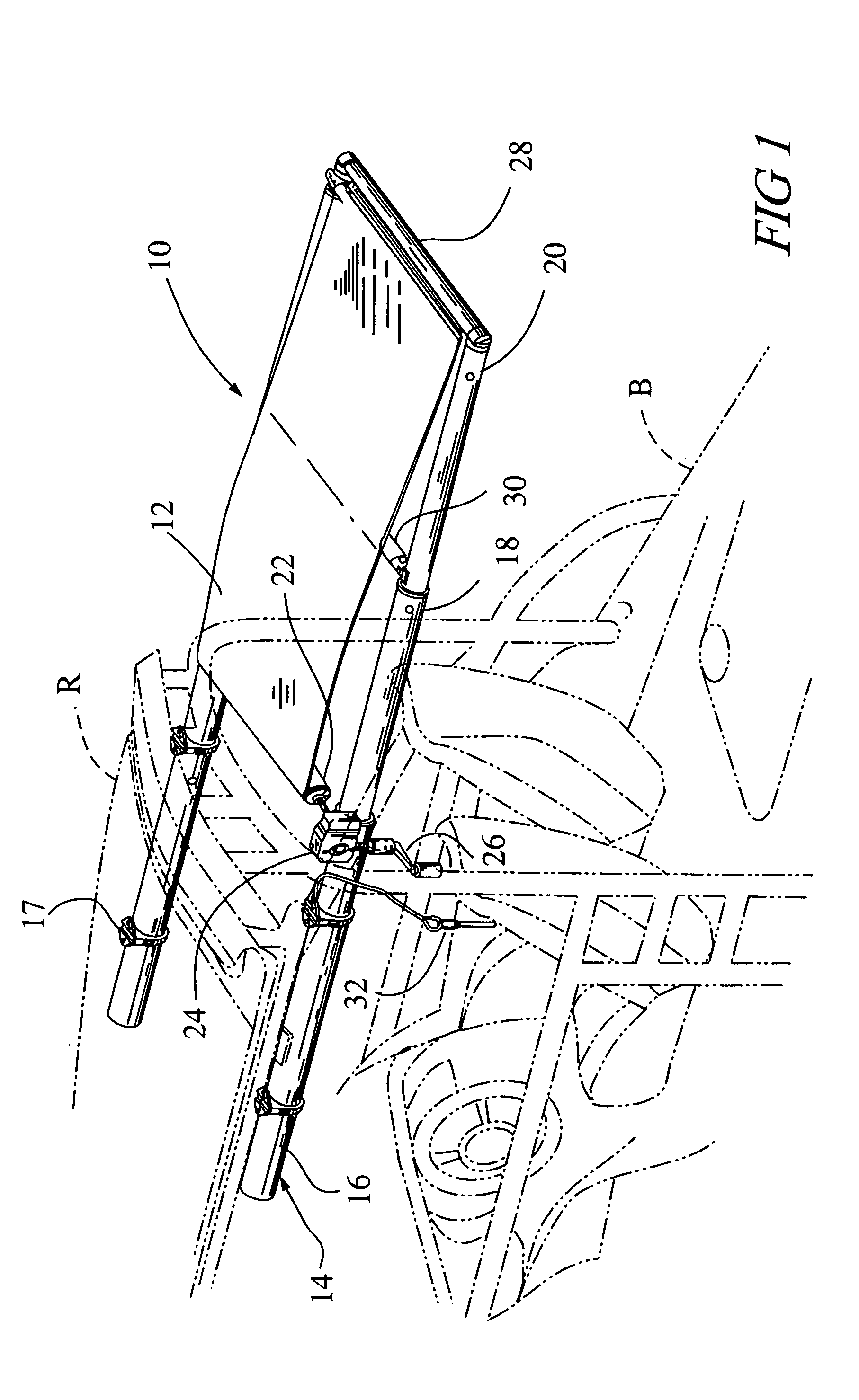Manually-operated boat canopy system
a man-operated, boat technology, applied in waterborne vessels, special-purpose vessels, vessel construction, etc., can solve the problems of manual systems, affecting the operation of boats, and affecting the operation of boats, and achieves the effect of simple operation and easy retrofitting
- Summary
- Abstract
- Description
- Claims
- Application Information
AI Technical Summary
Benefits of technology
Problems solved by technology
Method used
Image
Examples
Embodiment Construction
[0020]The following is a detailed description of a preferred embodiment of the present invention and the best presently contemplated mode of its production and practice. This description is further made for the purpose of illustrating the general principles of the invention but should not be taken in a limiting sense, the scope of the invention being best determined by reference to the appended claims.
[0021]Referring to the drawings, the following is a list of structural elements of the present canopy deployment system, generally designated 10, and those associated elements shown employed in connection with the present invention:[0022]10 canopy deployment system;[0023]12 canvas;[0024]14 tubular actuator assembly;[0025]16 rearward outer tube;[0026]16a rearward tube hole;[0027]17 mounting clamps;[0028]18 intermediate tube member;[0029]18a intermediate tube hole; [0030]20 forward tube member;[0031]20a forward tube hole; [0032]22 roller member;[0033]23 roller shaft;[0034]24 gear box;[00...
PUM
 Login to View More
Login to View More Abstract
Description
Claims
Application Information
 Login to View More
Login to View More - R&D
- Intellectual Property
- Life Sciences
- Materials
- Tech Scout
- Unparalleled Data Quality
- Higher Quality Content
- 60% Fewer Hallucinations
Browse by: Latest US Patents, China's latest patents, Technical Efficacy Thesaurus, Application Domain, Technology Topic, Popular Technical Reports.
© 2025 PatSnap. All rights reserved.Legal|Privacy policy|Modern Slavery Act Transparency Statement|Sitemap|About US| Contact US: help@patsnap.com



